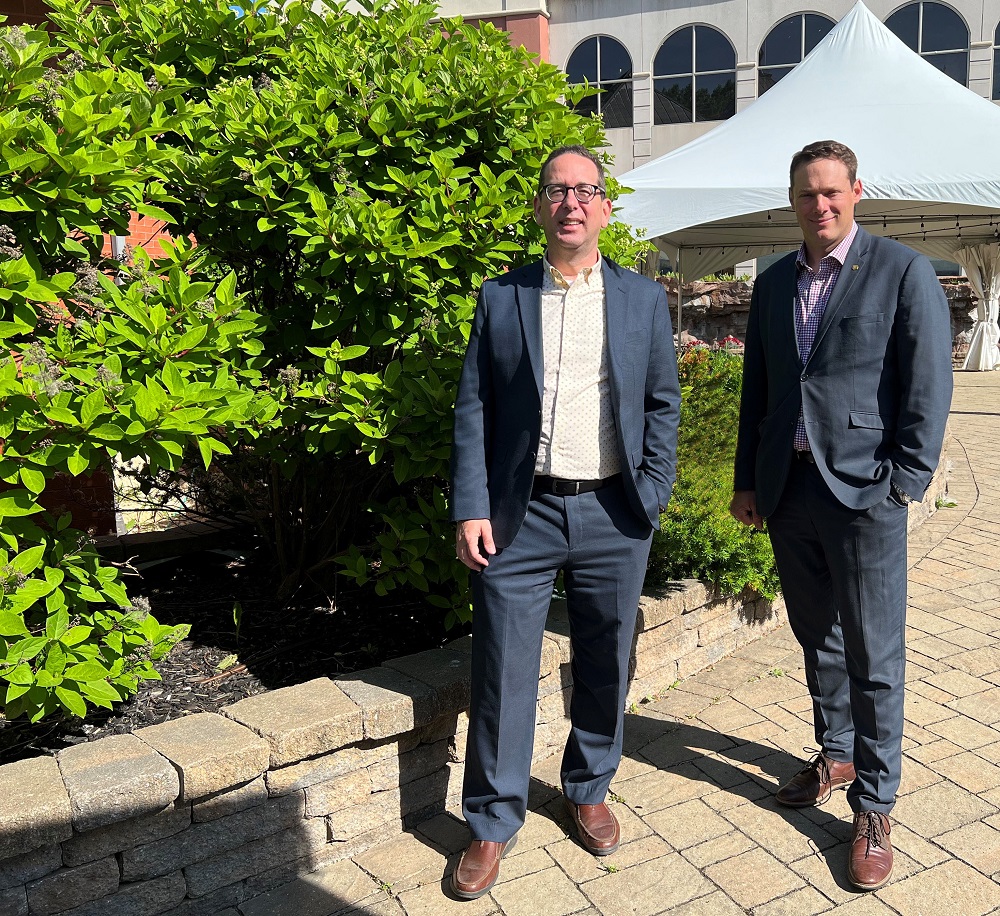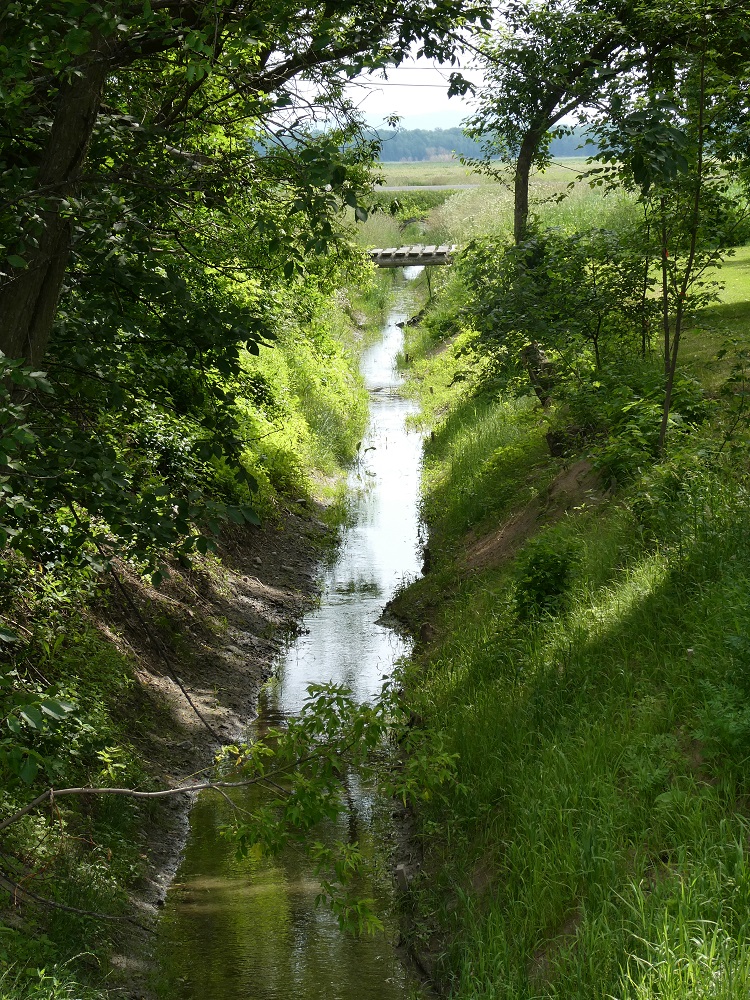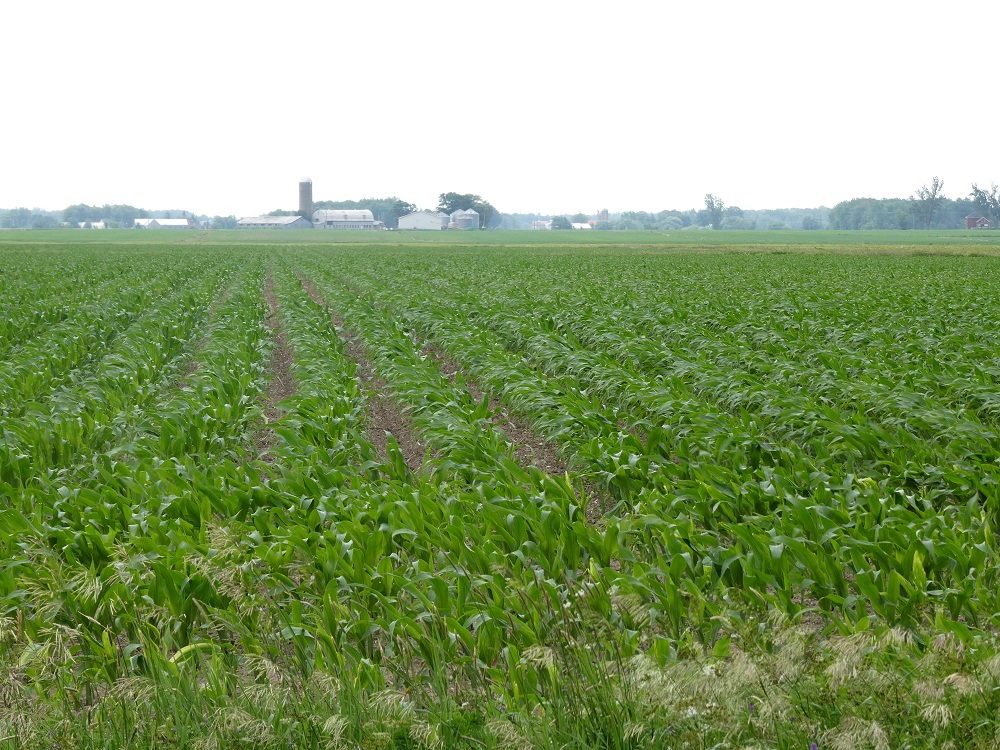
The MPA mandates the UPA Montérégie to protect and improve the main spawning site of the copper redhorse
Press release
Contrecœur, June 28, 2022 — The Montreal Port Authority (MPA) announced today that it has mandated the Fédération de l’Union des producteurs agricoles de la Montérégie (UPA Montérégie) to conduct an intervention program on agricultural practices along the watershed of the Bergeron and Séraphin-Choquette streams near the Richelieu River, upstream from a copper redhorse spawning site. The program is aimed at improving water quality and shoreline management to foster a habitat conducive to the survival and development of this fish species, given that the Richelieu River is the only river where it is known to spawn.
This announcement is part of the Port of Montreal’s Contrecœur expansion project, which includes the MPA’s commitment to implement a plan to mitigate environmental effects of the project. Under the agreement signed last March, valued at close to $800,000, experts from UPA Montérégie recently began a three-phased project. They will take action over the next five years to characterize the territory, propose sustainable agricultural practices and support their implementation.
To carry out the mandate, UPA Montérégie will use its multidisciplinary land use and regional development team composed mainly of biologists and agronomists. UPA Montérégie has been active in copper redhorse habitat management initiatives since 2009.
“The Fédération de l’UPA de la Montérégie is pleased with the agreement reached with the Montreal Port Authority which will allow, in collaboration with the agricultural producers of the Bergeron and Séraphin-Choquette streams’ watersheds, to improve water quality and to implement sustainable agricultural practices for the benefit of the copper redhorse”, declared Julien Pagé, 1st Vice President of UPA Montérégie.
“The Montreal Port Authority and the Union des producteurs agricoles have been partners for several years. So, we are enthusiastic about continuing this collaboration. The work of UPA Montérégie will enable us to implement practical solutions, and will support our objective to make our Contrecœur expansion an exemplary project in terms of sustainable development,” added Paul Bird, Vice President, Contrecoeur for the Montreal Port Authority.
The approach will include establishing technical solutions on farmland, for example, managing pollutants such as nitrates and pesticides, reducing runoff through agri-environmental practices, creating riparian buffers, and raising awareness among local agricultural producers upstream. In 2016, UPA Montérégie launched the ALUS Montérégie program, which annually helps preserve ecosystems and financially supports farmers in their efforts to protect the environment. In 2020, the MPA became a Gold Partner of the ALUS Montérégie program for five years.
The MPA plans to use a series of measures as part of its compensation plan surrounding the environmental effects of its Contrecœur expansion project. For the copper redhorse, these measures include a project to restore two hectares of seagrass beds used as feeding habitat for copper redhorse adults, twice the quantity of seagrass beds that will be affected. The introduction of an awareness program for river users on the copper redhorse, bank erosion and good boating practices, as well as a research project to improve knowledge on copper redhorse reproduction, are also planned. Other current and future initiatives aim to ensure minimal impact of the Contrecœur project on aquatic and terrestrial ecosystems.
Photo 1: From left to right, Louis-Philippe Péloquin, Senior Manager, Public Affairs and Communications, Contrecœur Project at the Montreal Port Authority and Julien Pagé, 1st Vice President of UPA Montérégie. Photo 2: Head of Séraphin-Choquette stream, upstream of the 4th Range culvert, in the territory of Mont-St-Grégoire, one of the sectors targeted by the UPA Montérégie's mandate for the Montreal Port Authority. Photo 3: Annual crops in the Bergeron and Séraphin-Choquette streams.
About the Port of Montreal
Operated by the Montreal Port Authority (MPA), the Port of Montreal is the second largest port in Canada and a diversified transshipment centre that handles all types of goods: containerized and non-containerized cargo, liquid bulk and dry bulk. The only container port in Quebec, it is a destination port served by the largest shipping lines in the world. It is also an intermodal hub with a service offering that is unique in North America, featuring its own rail network directly dockside connected to Canada’s two national rail networks. The MPA also operates a Cruise Terminal and a Port Centre.
The MPA factors economic, social and environmental components into its corporate initiatives. This commitment is governed by a sustainable development policy whose guiding principles focus on involvement, cooperation and accountability. Port activity supports 19,000 jobs and generates $2.6 billion in economic benefits annually.
About the Port of Montreal’s Contrecoeur expansion
Located in an industrial zone, the Contrecœur land reserve was acquired 30+ years ago by the Montreal Port Authority and has been the focus of careful collaborative planning to support the development of the supply chain in Quebec and Eastern Canada. With the support of Canada Infrastructure Bank and the Government of Quebec, the Port of Montreal and its partners plan to develop a new state-of-the-art container terminal able to handle up to 1.15 million containers (TEUs). Advantageously located in the core of the largest pool of consumers, importers and exporters in Quebec and Eastern Canada, close to major rail and road routes, the Port of Montreal’s Contrecœur expansion will consolidate local strengths to effectively meet future needs. This project will strengthen the world-class logistics centre in the heart of the St. Lawrence Valley.
About UPA Montérégie
UPA Montérégie has 34 administrators and brings together 15 local unions and 27 specialized unions. The 6,935 farms in its region alone generate 30% of Quebec’s gross domestic agricultural product and 25% of agricultural jobs in Quebec. UPA Montérégie contributes to the economic and social development of its communities. Through its leadership, UPA Montérégie actively contributes to the sustainability of agriculture and the prosperity of all agricultural producers in its territory in a context of sustainable development.
— 30 —




